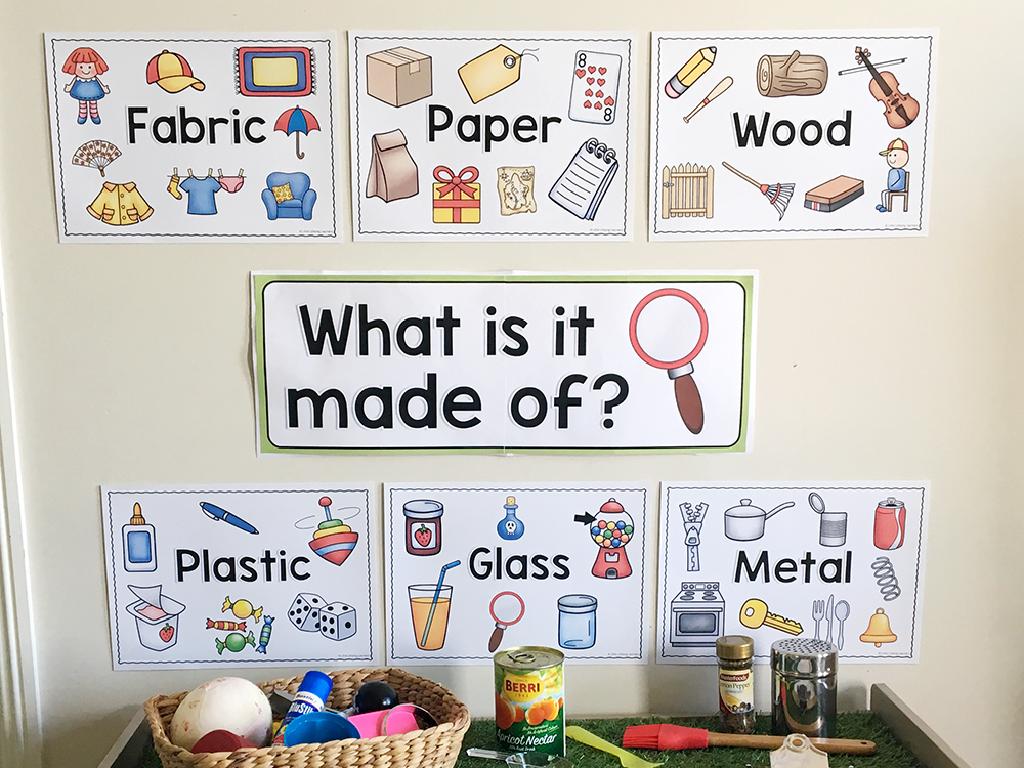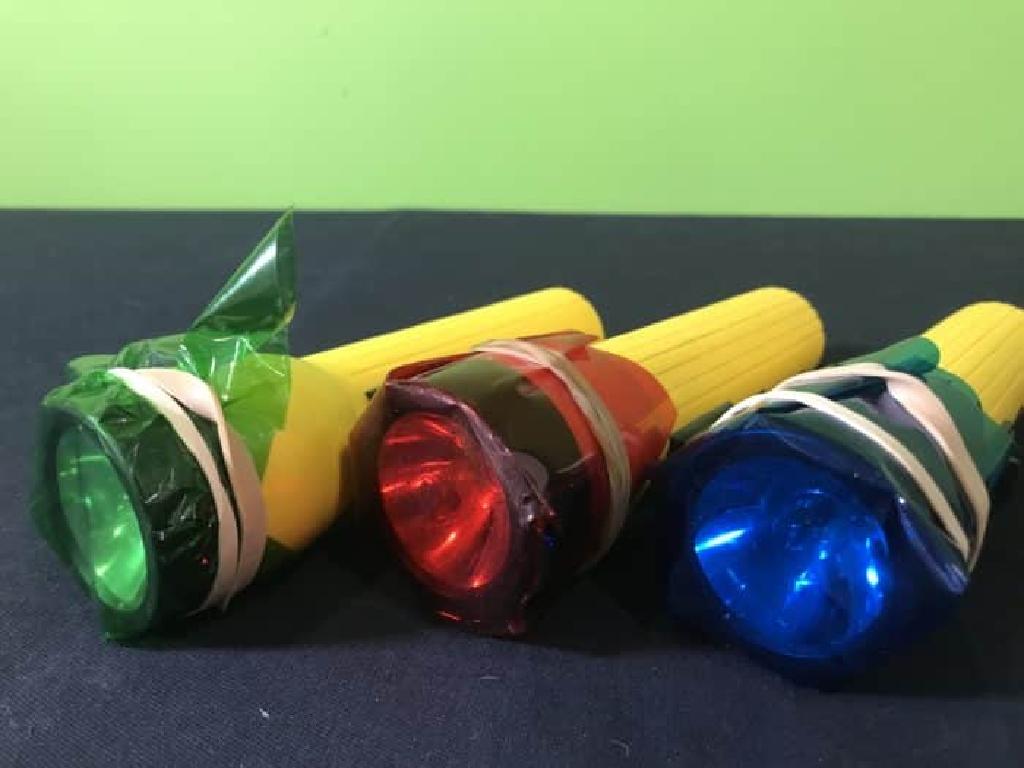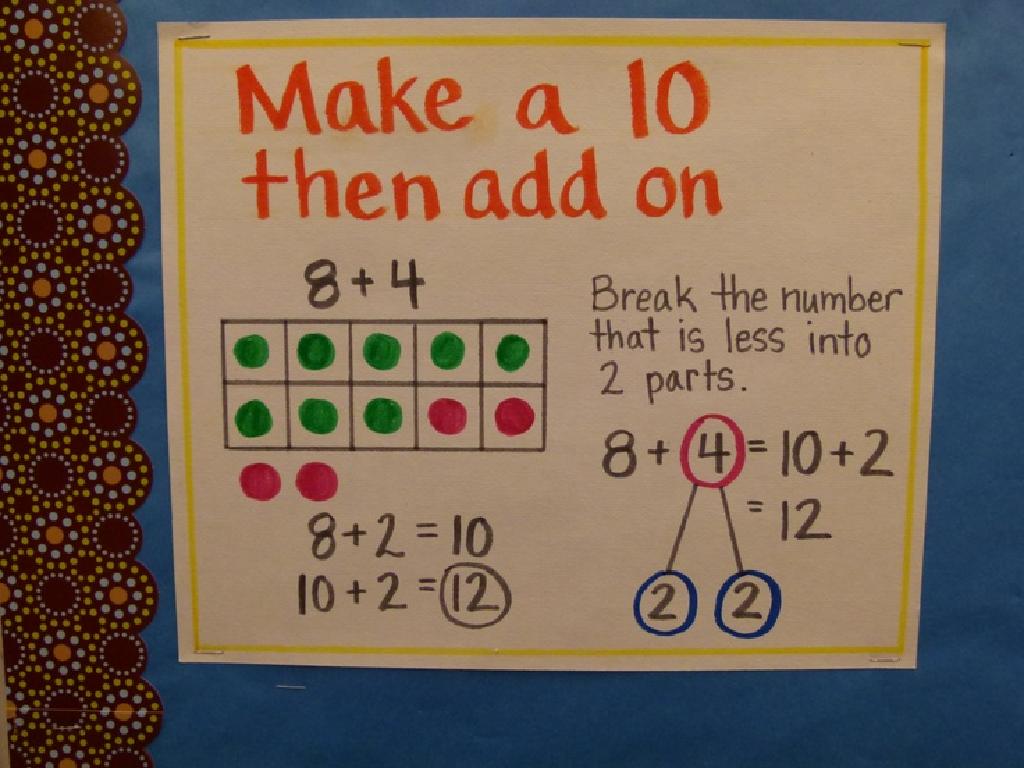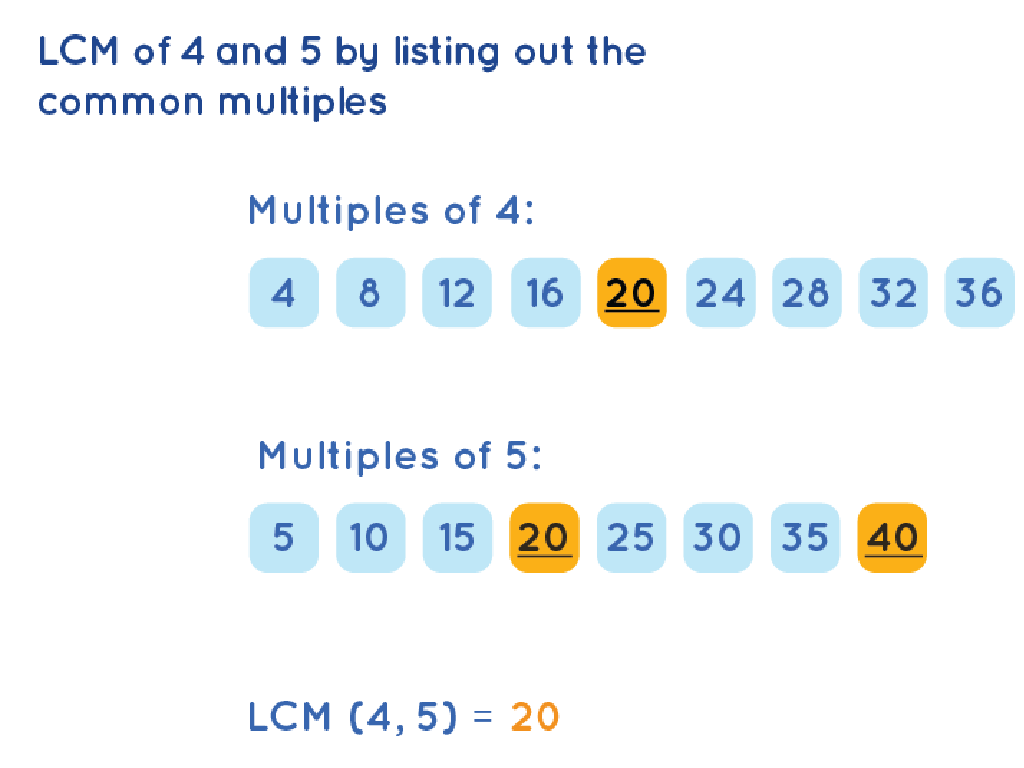Subtract Money Up To $1: Word Problems
Subject: Math
Grade: Second grade
Topic: Add And Subtract Money Up To $1
Please LOG IN to download the presentation. Access is available to registered users only.
View More Content
Welcome to Subtracting Money!
– Learn to subtract money up to $1
– Money handling is a key skill
– Understanding money helps with buying and saving
– Solve engaging word problems
– Use stories to make subtraction fun
– Practice with real-life examples
– Examples like spending at a store or saving in a piggy bank
|
This slide introduces the concept of subtracting money up to $1, which is a fundamental skill for second graders. Emphasize the importance of money management in everyday life. Engage the students with word problems that involve real-life scenarios, such as buying toys or snacks and calculating change. Encourage them to visualize the problems to better understand the concept of subtraction. Provide examples and guide them through the process step by step. Make sure to include a variety of problems to cater to different learning styles. In the next class, have students share their own word problems and solutions to reinforce their understanding.
Understanding Subtraction with Money
– Subtraction means taking away
– Subtracting money is like spending
– When you buy a toy, you give money away, that’s subtraction!
– Imagine subtraction with cookies
– If you have 10 cookies and take 3 to eat, you subtract and have 7 left.
– Practice with real-life examples
|
This slide introduces the concept of subtraction in the context of money, tailored for second graders. Begin by explaining subtraction as the process of taking away from a total amount. Relate this to money by discussing how spending or giving money away is a form of subtraction. Use the analogy of taking cookies from a jar to make the concept more tangible for young students. Encourage them to think of times they have spent money or shared something of their own to connect with the idea of subtraction. Provide real-life examples such as buying a small toy or a snack and calculating the change from a dollar. This will help them understand the practical application of subtraction in everyday life.
Understanding Money Values
– A penny equals 1 cent
– A nickel equals 5 cents
– A dime equals 10 cents
– A quarter equals 25 cents
– Remember, 4 quarters make $1!
|
This slide introduces the basic coins and their values, which is essential for understanding how to add and subtract money. Make sure to have real coins or replicas for visual aid and hands-on practice. Explain that 100 cents make up a dollar and show how different combinations of coins can add up to $1. For example, 10 dimes make a dollar, 20 nickels make a dollar, and so on. Encourage students to practice with simple word problems, such as ‘If you have 3 dimes and 4 pennies, how much money do you have?’ This will help solidify their understanding of coin values and prepare them for subtracting amounts up to $1.
Subtracting Pennies
– Start with 5 pennies
– Give away 2 pennies
– How many pennies left?
– Use subtraction: 5 – 2 = 3
– Let’s practice subtraction!
– We’ll do more examples as a class
|
This slide introduces the concept of subtraction using pennies, which is a tangible way for second graders to understand the concept of taking away. Start by explaining that if you have a certain number of pennies and you give some away, you will have fewer pennies left. Use the example provided to show the subtraction process: 5 pennies minus 2 pennies equals 3 pennies. Encourage the students to use physical pennies to practice this concept if available. Prepare a few more examples to work through as a class to reinforce the concept. Make sure to praise their efforts and correct any misunderstandings gently.
Subtracting Nickels, Dimes, and Quarters
– Recall coin values: nickel, dime, quarter
– A nickel is 5 cents, a dime is 10 cents, and a quarter is 25 cents.
– Subtracting one quarter from two
– If you start with 50 cents (2 quarters) and spend 25 cents (1 quarter), what’s left?
– Calculate money left after spending
– Use subtraction to find out how much money remains.
– Practice with different coins
|
This slide is aimed at helping second-grade students understand the concept of subtracting different coins. Start by reviewing the value of nickels, dimes, and quarters. Use real-life examples, such as spending a quarter from two, to illustrate subtraction with money. Encourage students to calculate the remaining amount after spending. Provide additional examples with varying amounts and types of coins for practice. For instance, if you have 3 dimes and spend 1, how much is left? Or, if you have 4 nickels and spend 2, what’s the remaining amount? These exercises will reinforce their understanding of subtraction and money value.
Subtracting Money: Word Problems
– Understand subtraction stories
– Example: Emma’s sticker purchase
– Emma starts with 75 cents, spends 25 cents on a sticker
– Calculate money left after spending
– Use subtraction: 75 cents – 25 cents = 50 cents left
– Solve together as a class activity
|
This slide introduces students to the concept of using subtraction to solve word problems involving money. Start by reading the story problem aloud and discussing what is happening in the story. Explain that Emma had a certain amount of money and spent some on a sticker. We want to find out how much money she has after the purchase. Walk through the subtraction process step by step, showing that when Emma buys the sticker, we subtract the cost of the sticker from the amount she originally had. Encourage students to visualize the problem, perhaps using physical coins if available. After explaining the example, invite students to solve similar problems in groups or pairs, providing guidance as needed. This interactive approach helps solidify their understanding of subtraction in the context of money.
Let’s Practice More: Subtracting Money
– Solve word problems involving subtraction
– Use coins to help find the answer
– Pretend your coins are real to subtract amounts
– Discuss your solutions with classmates
– Understand subtraction with money
– Grasp how to take away money amounts up to $1
|
This slide is designed to engage second-grade students in practical subtraction problems involving money. Provide them with word problems that require subtracting amounts up to $1. Encourage the use of physical coins or representations to help them visualize the subtraction process. After solving the problems, students should be ready to share their answers with the class, fostering a collaborative learning environment. As a teacher, prepare to guide them through the process, offer hints if needed, and discuss different methods to find the correct answers. Possible activities could include a mock store where students ‘buy’ items and calculate change, or a game where they race to find the correct subtraction using coins.
Class Activity: Partner Money Subtraction
– Pair up for subtraction problems
– Practice with real or play coins
– Use coins to subtract amounts, like 50 cents – 30 cents
– Assist and verify each other’s work
– Make sure both partners agree on the answer
– Discuss strategies and solutions
– Share how you solved the problem with the class
|
This activity is designed to encourage collaboration and hands-on practice with subtracting money. Students should pair up and work through a series of subtraction problems using real or play coins to visualize the process. Encourage them to help each other and double-check their partner’s calculations to ensure accuracy. As they work, they should discuss the strategies they use to find the answers. Possible activities include: subtracting prices of items in a mock store, calculating change from a dollar, or comparing different combinations of coins to reach the same amount. This will help reinforce their understanding of subtraction and money concepts in a fun, interactive way.
Subtraction Success and Homework
– Congratulations on learning subtraction!
– Complete the subtraction worksheet
– Worksheet includes problems on subtracting amounts up to $1
– Practice subtraction at home
– Try using coins to help visualize the problems
– Remember, practice makes perfect!
|
This slide marks the conclusion of the lesson on subtracting money up to $1 and transitions to homework instructions. The homework consists of a worksheet that reinforces the day’s learning. Encourage students to practice at home, possibly with real coins, to solidify their understanding of subtraction with money. Remind them that consistent practice is key to mastering math skills. For the next class, plan a brief review of the homework to address any difficulties students may have encountered.






